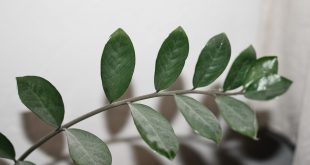Syngonium podophyllum is commonly called an arrowhead vine, arrowhead plant, and goosefoot. This is a well-cultivated indoor plant with heart-shaped leaves. Due to their foliage of different colors, they make awesome scenery as an indoor plant.
Syngonium podophyllum belongs to the family Araceae. This is native from Mexico to Bolivia in Latin America and natural to Florida, Texas, Hawaii, and the west indies. It is a climbing vine and an evergreen plant. They live in the trunk of the jungle trees and climb by their roots.
Syngonium podophyllum is a good indoor species and has many varieties due to their foliage differences. Some of them are Syngonium podophyllum Emerald Gem, Holly, Bold Allusion, Variegatum, Painted arrow, Pink Allusion, strawberry creamy Syngonium, etc.
Syngonium podophyllum stem is bluish-green and also contains a milky sap. These climbing stems are smooth and produce roots at their nodes. The older stem becomes thick and turns pale brown, and the young one produces root hair and adheres to the place where they live.
This plant has heart-shaped, arrowhead-pointed leaves. The leaves vary in size, 15 to 16 cm long, shape and color. The leaves are dark in color and contain silvery-white strips or veins. This plant has different leaves color according to the position on the stalk-like, green, pink, creamy-white, light green, etc.
They are mono flower species, with 1 to 11 flowers. The flowers are greenish or light orange. The flower is flask-shaped and enclosed in creamy white to greenish-colored modified leaves. The female flower is present at the base of the plant and male flowers above the female flowers.
The fruit is present within a tube formed by the modified greenish leaf. The fruit color is brown or white and falls after they turn into red or orange. The fruit contains 50 to 100 seeds which are cylindrical with a rounded end. If the seed is dry out, then they lose their germinating ability.
Syngonium podophyllum likes a light bright indirect light. Direct and harsh sunlight can burn the leaves and affect their color. The varieties with variable leaves can tolerate different light, but the dark-colored leaves need a shady area. Keep the pot near the window where they receive indirect light.
Syngonium podophyllum needs a light, well-draining potting mix soil. The plant needs well-draining soil because of root rot. The mixture of peat moss, perlite, and orchid bark is good for Syngonium podophyllum.
Syngonium podophyllum grows best in warm conditions. The ideal temperature for this is 60ºF to 80ºF. Keep away from low temperatures and do not drop the temperature below 50ºF. Keep away from windows and doors during winter to maintain temperature.
Syngonium likes a high humidity level. The average house humidity is good for them, but plants do best in high humidity. The ideal humidity level for Syngonium is 50 to 60%. Also, keep the humidity level high by placing the tray full of pebbles and water near the plant or by misting regularly.
Syngonium podophyllum needs plenty of water during the growing season. They need more water during the week during summer. Water them regularly but do not make the soil soggy because it rots the root. Water them when little of the soil dry out between watering. The small pot plant needs less water, but large container plants need more water at a regular interval.
Syngonium needs fertilizer during the growing seasons, summer and fall. Fertilized them when their growth once a month. The balanced houseplant liquid fertilizer is good for the Syngonium plant. Do not fertilize in winter when the plant is naturally dormant.
Pruning the Syngonium podophyllum is necessary to maintain the size of the indoor plant. Prune the dead leaves and stem, which is not further useful for plants. Wear gloves during pruning because the sap causes skin irritation.
The propagation of Syngonium is necessary to increase the growth rate. Propagation is done by cutting off the stem with 2 to 3 nodes. Place the stem in water and add some rooting hormone. Waiting for a few days, if you see the stem nodes develop some aerial roots, then it is ready for growth in the pot.
The second method is to propagate by dividing the plant into two. Divided the plant and soaked it into the new well-prepared pot. Water them properly and place them in a location with bright indirect light. With time, the plant produces roots and is ready to grow.
Repotting is good for this plant if you need to spread it largely. Repot in the new pot with the same size and well-draining soil. Do the reporting once a year when it reaches its full size and growth. Also, you can change the potting soil every year for better and fast growth.
Syngonium podophyllum is attacked by pests like mealybugs, spider mites, scales, aphids, etc. These pests eat the leaves and use the sap of the plant. Pest is controlled by spraying neem oil on the plant leaves.
Syngonium podophyllum is toxic to animals, pets, and also humans. Calcium oxalate present in cell sap and leaves of the plant are toxic, which causes skin irritation, vomiting, swelling of lips and tongue, loss of appetite, oral pain, etc.
 TwentyOneFacts Interesting Facts – Fun Facts – Random Facts
TwentyOneFacts Interesting Facts – Fun Facts – Random Facts
